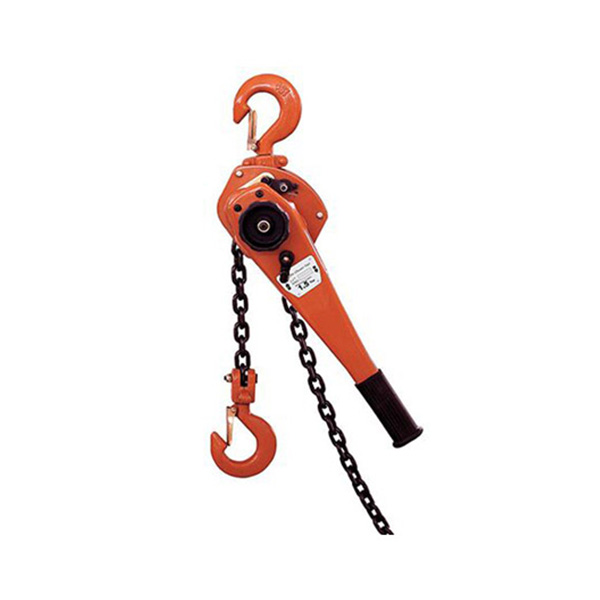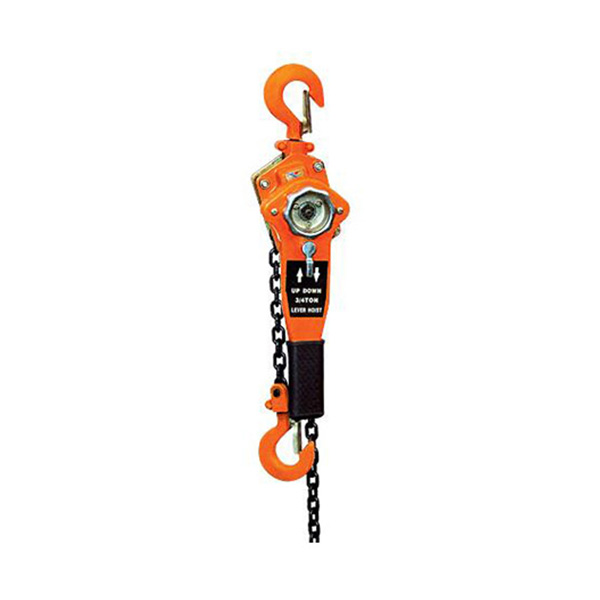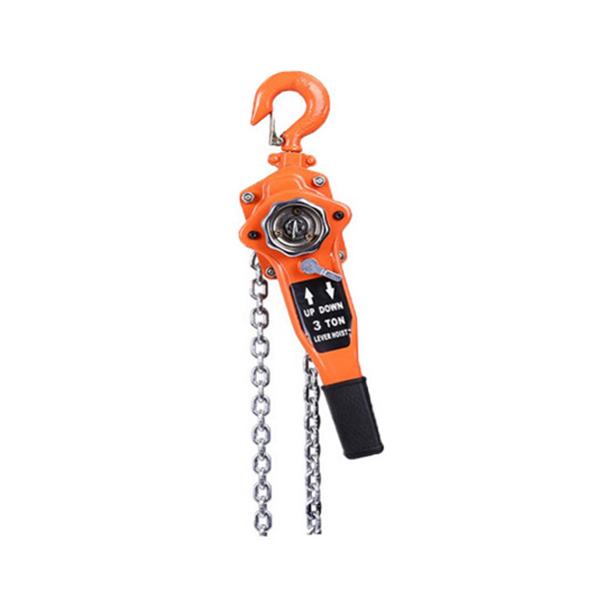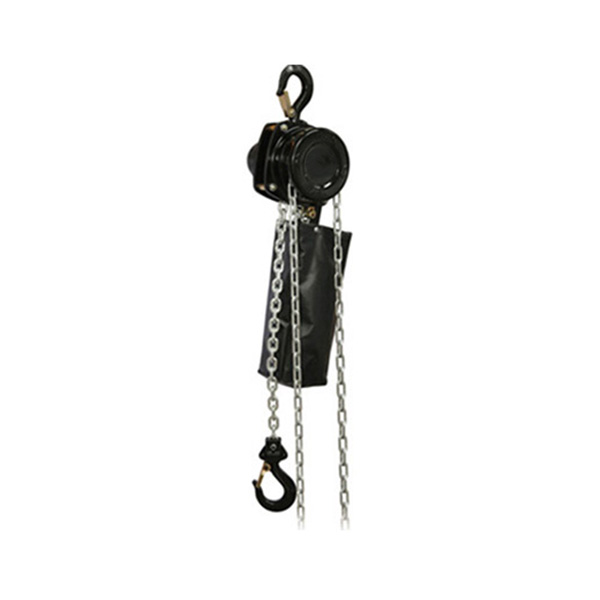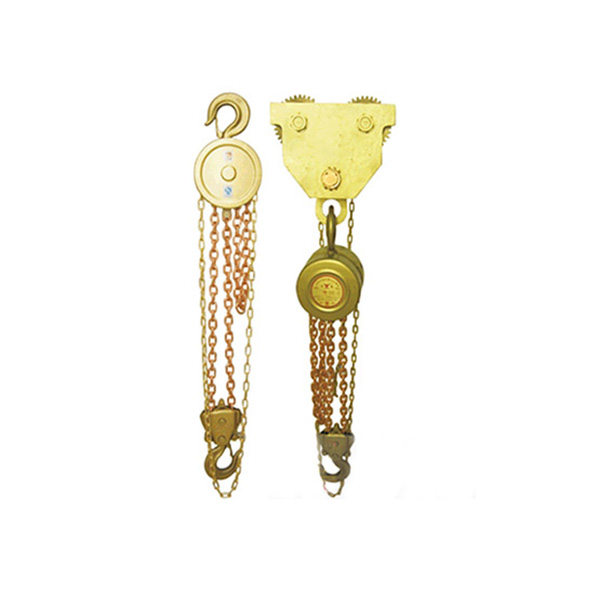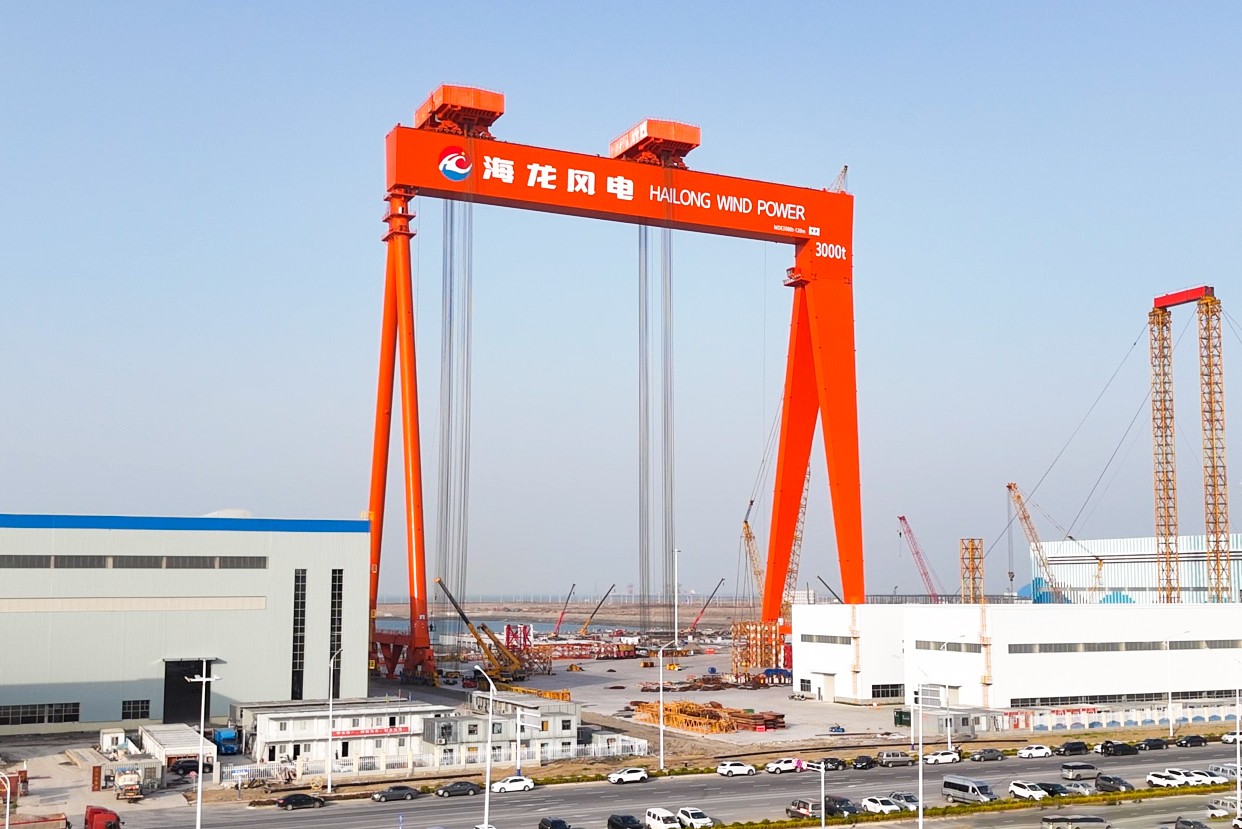
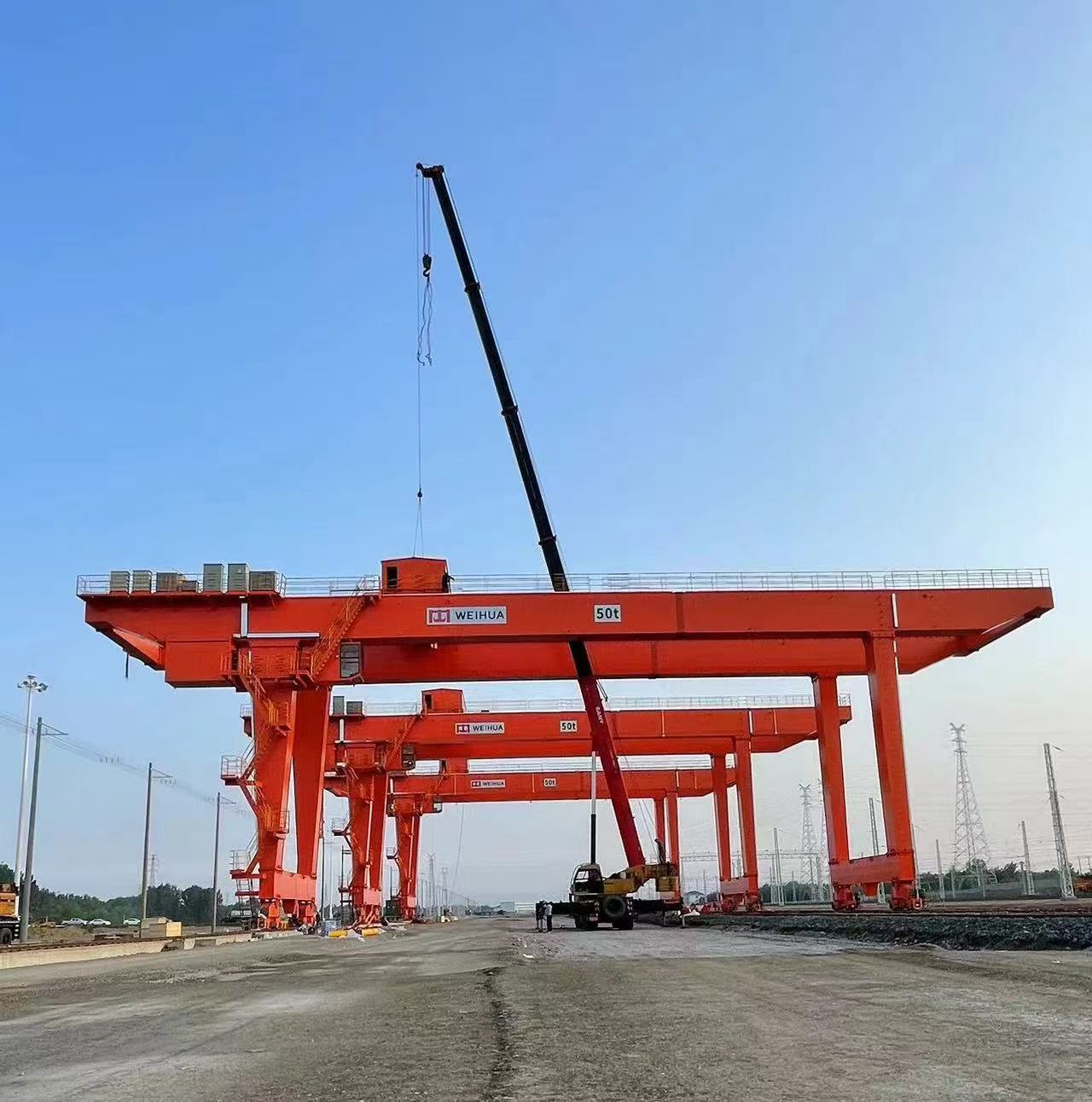
All types of cranes put into use for the first time need to undergo performance tests to verify the performance of the crane, including inspections and tests on working parameters and load-bearing capacity.All types of cranes put into use for the first time need to undergo performance tests to verify the performance of the crane, including inspections and tests on working parameters and load-bearing capacity.
1. Scope of application
Performance testing of all types of cranes put into service for the first time after manufacture, modification and major repairs to the load-bearing structure or components of the crane.
2. Inspection and test items
The inspection and test items for verifying the performance of the crane include, but are not limited to: visual inspection, parameter measurement and performance verification, load test, and noise test (if necessary).
For mass-produced cranes, the number of crane prototypes used for inspection and testing shall be determined by mutual agreement between the manufacturer/supplier and the purchaser.
3. Visual inspection
The visual inspection shall be carried out according to the type of crane, including the specifications and/or status of all important parts to check whether they meet the requirements:
*Electrical, hydraulic and pneumatic equipment;
*Crane mechanisms, important metal structures and their connections;
*Ladders, passages, driver’s cabs, platforms;
*Click to view details Control devices, lighting and signals, wind speed measuring devices;
*All safety protection devices;
*Click to view details Drums, brakes, reducers and their supporting structures, fasteners;
*Wire ropes or other rigging and their connections, fasteners;
*Pulley blocks and their pins, fasteners’ connections;
*Hooks or other lifting equipment and their connections, fasteners; Safety signs and hazard diagrams;
*Information signs;
During the inspection, except for the covers that need to be opened for normal maintenance and inspection (such as limit switch covers), other parts should not be disassembled.
The visual inspection shall also include the review of the specified acceptance documents and relevant technical documents.
4. Parameter Measurement and Performance Verification
When measuring parameters and verifying performance of cranes, they should be carried out according to the prescribed documents.
Depending on the type of crane, the following parameters and performances should be measured or verified:
* Crane mass (if necessary);
* Distance from the slewing axis to the tipping line;
* Lifting height/descent depth; click to view details
* Hook limit position;
* Track tolerance, span, gauge, base distance;
* Maximum and minimum amplitude;
* Effective cantilever reach;
* Lifting/descent speed;
* Carriage and trolley running speed;
* Slewing speed;
* Luffing (pitch) time;
* Boom extension and retraction time;
* Safety distance;
* Working cycle time (if necessary);
* Functions of limiters, indicators and safety devices;
* Performance of the drive device, such as the current of the motor under the test load state;
* Quality of important welds (if necessary).
According to the actual working conditions, verify the above basic parameters and functions under no-load and rated load conditions.
5. Load test
1. General requirements
The load test requires five tests, including:
* No-load test (the purpose is to check whether the performance of the crane’s various mechanisms and safety protection devices is normal, to ensure the safety of the loading test);
* Rated load test (the purpose is to test the relevant performance indicators of the crane through the rated load test);
* Static load test (the purpose is to test the load-bearing capacity of the crane and various structural parts);
* Dynamic load test (the purpose is to test the performance of the crane’s various mechanisms and brakes);
* Stability test, if necessary (the purpose is to test the crane’s ability to resist overturning moment).
2. No-load test
a. Before the loading test, a no-load test should be carried out. b. Under no-load conditions, run each mechanism of the crane in the forward and reverse directions, with a cumulative time of not less than 5 minutes. During the test, each mechanism and control system should operate normally without any abnormal phenomenon such as jamming. The performance of safety devices such as crane limiters, indicators, buffers, brakes, etc. should be normal and reliable.
c. According to the type of crane and work needs, measure or verify the parameters and performance specified in “IV. Parameter measurement and performance verification”.
3. Rated load test
a. Under the working conditions specified in the product standard, lift the rated lifting load and perform the operation test of each mechanism of the crane. Each action should not be less than 3 times.
b. During the test, each working mechanism should move smoothly and operate normally, and can achieve the specified functions and actions without abnormal vibration, impact overheating, abnormal noise, etc. The performance of the safety protection devices such as the crane limit device, buffer, brake, etc. should be normal and reliable. The operating mechanism, control system, interlocking and interlocking device should operate reliably and accurately, so that the electrical device should work normally. The hydraulic (pneumatic) system should have no leakage, and the lubrication system should work normally.
c. According to the type of crane and work needs, measure or verify the parameters and performance specified in “IV. Parameter measurement and performance verification”.
4. Static load test
a. During the test, the crane should be placed in a position and state where the main components can withstand the maximum lifting load, maximum bending moment and/or maximum axial force according to the actual use. The test load should be loaded gradually and lifted to 100 mm to 200 mm above the ground. The suspension time should not be less than 10 minutes. Higher values can be specified in the contract.
If a static load test cannot make each main component of the crane withstand the maximum bending moment and/or maximum axial force, the corresponding load should be lifted at each unfavorable position for static load test.
b. If there is no higher value requirement for the same equipment, the test load of all cranes should be 1.25P; where P is defined as:
* For mobile cranes, it is the rated lifting weight (the mass of the load on the lifting mechanism, including the effective lifting weight and the mass of the hook pulley block);
* For other types of cranes, it is the maximum lifting weight specified by the manufacturer.
c. During the test, if there is permanent deformation, the test should be repeated from the beginning, but no more than three times in total, and there should be no permanent deformation. After the test, if no cracks, paint peeling or damage that may affect the performance and safety of the crane is found, and no looseness or damage is found in the connections, the test result is considered to be qualified.
5. Dynamic load test
a. Each mechanism of the crane shall be subjected to a dynamic load test of 1.1P. If specified in the crane specification, a joint action test shall be conducted. The test shall be conducted in the position and state where each mechanism bears the maximum load. The test shall include repeated starting and braking of each mechanism within its entire range of motion, and shall also include starting and braking of the suspended test load in the air. At this time, the test load shall not move uncontrollably.
If the user requires, except for the lifting mechanism, each mechanism of the crane may be subjected to a load test of 1.25P at a low speed specified by the manufacturer.
b. During the test, the crane shall be controlled in accordance with the provisions of the operating manual, and the acceleration, deceleration and speed shall be limited to the normal working range of the crane.
c. If each component can complete its functional test, and no damage to the mechanism or structural components is found in the subsequent visual inspection, and there is no looseness or damage to the connection, the result of the test is considered qualified.
6. Stability test
a. The stability test shall be carried out in the most unfavorable position or state in the specified working area. If different loads are specified in different positions or working areas, the stability test shall be carried out selectively under these conditions.
b. The test load shall be gradually loaded and lifted to 100 mm to 200 mm above the ground. The suspension time shall not be less than 5 minutes. The test load and specific test method shall be in accordance with No. 3 to No. 5 of this regulation.
c. During the test, if the crane can remain stable, the result of the test is considered qualified.
6. Noise test (if necessary)
1. The noise test should at least include the A-weighted sound pressure level noise value at the operator’s position.
A [weighted] sound [pressure] level: the sound pressure level measured by the A-weighting network. The unit is decibel, and the unit symbol is dB. There are also less commonly used B and C sound levels.
Weighting: a method of transforming a signal. The basic point is to highlight certain components in the signal and suppress other components in the signal.
Weighting network: an electrical network designed according to the weighting function to achieve the purpose of expected signal transformation.
2. According to the characteristics of the crane, the operating speed, lifting load and working cycle that generate the most noise should be selected for measurement.
3. If the difference between the measured values is at least 2 values not greater than 1 dB, the test is over. Otherwise, the measurement should continue until the difference between the measured values meets the condition that at least 2 values are not greater than 1 dB.
4. When measuring in a closed machine room, the doors and windows of the machine room should be closed, and the air conditioner or fresh air system should be turned on. For the operating speed of the air conditioner or fresh air system, if there are only two operating speeds, use the maximum operating speed; if there are more than two operating speeds, use the medium operating speed.
5. The background noise correction value and the environmental correction value should be subtracted from the noise measurement value.
-
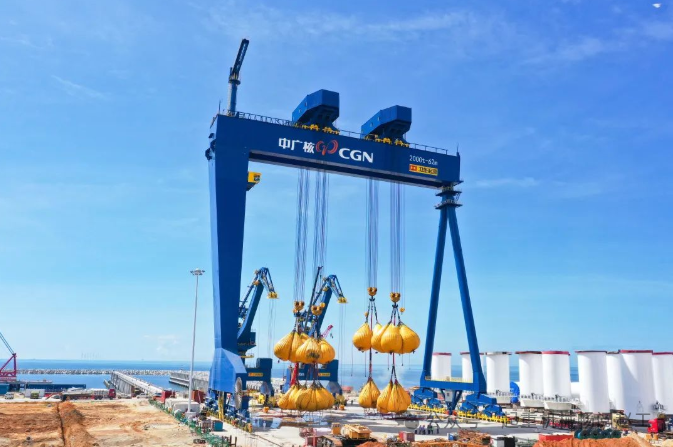 During the installation and operation of the crane, the trolley operating mechanism and the car operating mechanism may not run synchronously on both sides of the track, especially when the span (or track gauge) is relatively large. If you encounter such a problem, how to solve it? 1. Determination of asynchronous operation of crane Characteristics of asynchronous operation failure: the trolley twists or swings forward when starting or running, or the wheels show signs of climbing the tracks ...How to solve the problem of crane operating mechanism being out of sync?
During the installation and operation of the crane, the trolley operating mechanism and the car operating mechanism may not run synchronously on both sides of the track, especially when the span (or track gauge) is relatively large. If you encounter such a problem, how to solve it? 1. Determination of asynchronous operation of crane Characteristics of asynchronous operation failure: the trolley twists or swings forward when starting or running, or the wheels show signs of climbing the tracks ...How to solve the problem of crane operating mechanism being out of sync? -
 All types of cranes put into use for the first time need to undergo performance tests to verify the performance of the crane, including inspections and tests on working parameters and load-bearing capacity.All types of cranes put into use for the first time need to undergo performance tests to verify the performance of the crane, including inspections and tests on working parameters and load-bearing capacity. 1. Scope of application Performance testing of all types of cranes put into service ...How to verify the performance of a crane?
All types of cranes put into use for the first time need to undergo performance tests to verify the performance of the crane, including inspections and tests on working parameters and load-bearing capacity.All types of cranes put into use for the first time need to undergo performance tests to verify the performance of the crane, including inspections and tests on working parameters and load-bearing capacity. 1. Scope of application Performance testing of all types of cranes put into service ...How to verify the performance of a crane?
